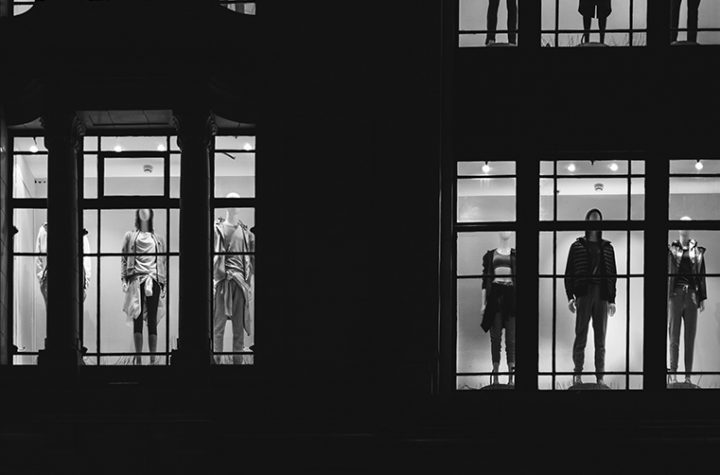
Registered nurse Cayli Hunt puts on her personal protective equipment prior to entering a COVID positive room in the COVID-19 intensive care unit at St. Paul’s hospital in downtown Vancouver, Tuesday, April 21, 2020.
JONATHAN HAYWARD/The Canadian Press
Ahead of the COVID-19 pandemic, supplies of vital personal protective gear in the federally managed emergency stockpile were a fraction of what was required, according to new information obtained by The Globe and Mail.
In addition, Public Health Agency of Canada officials tell The Globe that the federal stockpile was not funded or mandated to amass significant levels of supplies, such as N95 respirator masks.
The federal agency did not have a target for the levels of personal protective gear it should maintain in the stockpile, did not know what level of stockpiles the provinces and territories had and did not advise lower-level governments about how much should be stockpiled, the officials said. This, despite calls in the wake of the 2003 SARS outbreak for governments to stockpile personal protective equipment and secure supply chains.
Story continues below advertisement
The Globe is not disclosing the names of the officials because they were not authorized to speak publicly.
The level of preparedness meant that on Feb. 12, a month before the novel coronavirus forced a Canadawide shutdown, federal stockpiles of personal protective equipment included 540 ventilators, 94,000 surgical masks, 100,000 N95 respirator masks, 400,000 face shields, 500,000 gowns and two million gloves, according to officials.
By comparison, those numbers were well below what just one province was predicting it needed for only one week in April. Internal documents show Ontario was expecting to use 2.5 million surgical masks and 250,000 N95 respirator masks in that seven-day stretch.
Opinion: Lessons are learned from every pandemic. And every time, we forget them
Inside Ontarios desperate scramble for N95 masks
The supplies were clearly inadequate for the situation Canada was about to face, University of Toronto associate professor Alison Thompson said. She researches pandemic ethics and planning, and has consulted both federally and internationally on preparedness and responses.
Its a bit shocking, she said. They were caught off guard by this, which is really ridiculous.
Prof. Thompson said reports of medical staff being asked to use the same mask for an entire shift show governments are “not meeting their reciprocal obligations to protect health care workers and thats because of a failure to stockpile and procure these resources.
Canadas emergency stockpile is billed as an insurance policy for provinces, and a resource that local authorities can turn to when they face a surge in demand. But officials described that mandate narrowly, saying it was not set up to respond to the needs of an entire country, but rather to one or two provinces facing a time-limited emergency, such as a natural disaster.
Story continues below advertisement
A driver for Safecare B.C. secures a load of personal protective equipment in a truck for Safecare B.C. in Surrey, B.C. Tuesday, April 28, 2020.
JONATHAN HAYWARD/The Canadian Press
Experts say the stockpile has fallen short in its role as a place of last resort, and that the needs Canada is currently facing are no surprise given a litany of past epidemics and pandemics including SARS, H1N1, MERS and Ebola. But they said the problem reaches far beyond Ottawa, highlights shortfalls in preparedness at provincial levels and shows the challenges that federalism brings to pandemic planning when multiple governments hold responsibility.
Canadas first chief public health officer, David Butler-Jones, told The Globe that the intention of the federal stockpile was not to replace provincial and territorial responsibilities, but to act as an additional level of security.
That security fell short, but so did the provinces, Dr. Butler-Jones said. Theres lessons all around here,” he said, noting that public health agencies across Canada have seen cuts in the past eight years.
While Alberta maintains a three-month supply of protective equipment, Reuters reported in March that Ontario let a stockpile of 55 million N95 respirator masks expire. Alberta has since sent some protective equipment to Quebec, Ontario and B.C.
How many coronavirus cases are there in Canada, by province, and worldwide? The latest maps and charts
Coronavirus guide: Updates and essential resources about the COVID-19 pandemic
What is my province or territorys coronavirus lockdown like, and when will it be lifted? A guide
In the past decade, the federal stockpile has gone through a major overhaul, with its budget, staff and bricks and mortar facilities all whittled down. According to the officials and information in public reports, the stockpile now has 18 permanent staff, down from 27 in 2009-10, it has eight permanent warehouses, down from 11 in 2011, and it has 28 smaller prepositioned sites, down from 1,300 in 2011. Spending on warehouse leasing was $2.5-million last year, down from $7.7-million in 2010-11.
The officials said the changes were made through a decade-long modernization of the program that saw outdated equipment, such as cots, disposed of. They said the prepositioned sites, where the provinces are responsible for the warehousing space but the federal agency controls the assets, did not hold personal protective equipment.
Story continues below advertisement
Storing personal protective equipment was never a priority for the stockpile, the officials said, adding that they were historically not in high demand. Instead, the programs pandemic preparedness focused on access to anti-viral treatments. While the protective gear was not an internal priority for the stockpile, it is consistently listed in public documents as one of its coverage areas.
Reuters reported in March that Ontario let a stockpile of 55 million N95 respirator masks expire.
Nicholas Pfosi/Reuters
By the time the coronavirus was on the worlds radar, there was already a shortage in N95 respirator masks, the officials said. Still, the agency started ordering more supplies in January. Small amounts had already arrived by Feb. 12, the officials said. Since then, planeloads of equipment have been received.
On Feb. 26, Canadas deputy chief public health officer, Dr. Howard Njoo told the House of Commons health committee that should a province require additional support were certainly able to meet that request. But he also cautioned that its difficult for him as a federal official to answer whether provincially run health care systems have enough resources.
In the House of Commons on Wednesday, Health Minister Patty Hajdu said the stockpile was never meant for a pandemic of this size.
It was a very difficult thing to do, Ms. Hajdu said. As we saw the demand increase across Canada, of course we realized that the pandemic stockpile, which had been assembled over a number of years, was simply not going to be sufficient.”
Provinces and territories were also struggling, she added.
Story continues below advertisement
Tim Dinh, left, and Reza Fakhraei catalog donated diapers and wipes during a donation drive for PPE and medical supplies to benefit long-term care homes, shelters, family physicians and hospitals, in Ottawa, on Saturday, April 25, 2020.
Justin Tang/The Canadian Press
After so many years of experience with pandemics, The U of Ts Prof. Thompson said the jurisdictional blame game shouldnt still be an issue.
She said there is little new in what officials are grappling with in the COVID-19 pandemic but theres a “willful forgetting after a public health crisis: as the emergency fades into the past, so does the political will to be better prepared for the next one.
We have known for a very long time that this kind of outbreak is entirely likely,” she said. “To not plan for the worst-case scenario in this day and age is really shortsighted and I would go so far as to say it constitutes neglect of the publics health.
To prevent a repeat in the future, she said there should be federal legislation to detail responsibilities and mandate stockpiling.
During the SARS crisis, hospitals in Toronto suffered devastating shortages of personal protective equipment needed to prevent the spread of the virus, including N95 respirator masks, gloves, gowns, visors and other protective gear. The SARS Commission, struck to investigate what went wrong during the crisis, singled out the need for governments to stockpile medical equipment necessary to contain an outbreak, particularly inside hospitals.
There was no specific recommendation about what a stockpile might look like, except that we should be prepared to address the pandemic problems identified by SARS including having adequate domestic supply, said Mario Possamai, a senior adviser to the SARS Commission.
Story continues below advertisement
Having not heeded the warnings from SARS on stockpiling, Canada must learn from this pandemic, Prof. Thompson said.
There are going to be a lot of lessons that we can learn from this and we better learn them, because if we dont were just going to have this happen again.
Now that it is recommended you wear a face covering in dense public settings like grocery stores and pharmacies, watch how to make the three masks recommended by the Centers for Disease Control and Prevention. Written instructions available at tgam.ca/masks
Sign up for the Coronavirus Update newsletter to read the days essential coronavirus news, features and explainers written by Globe reporters.





More Stories
After a cluster of new COVID-19 cases among the White House staff and a campaign offical, the election night watch party in the White House has become another symbol of U.S. President Donald Trump’s cavalier attitude toward a virus that is ripping across the …
Rob Lucas says the SA economy is forecast to go backwards by 0.75pc in 2020-21, a better outcome than a national economy forecast to shrink 1.5pc.
Labor and crossbench senators want changes to JobMaker, arguing too many workers will be excluded from the hiring credit scheme.